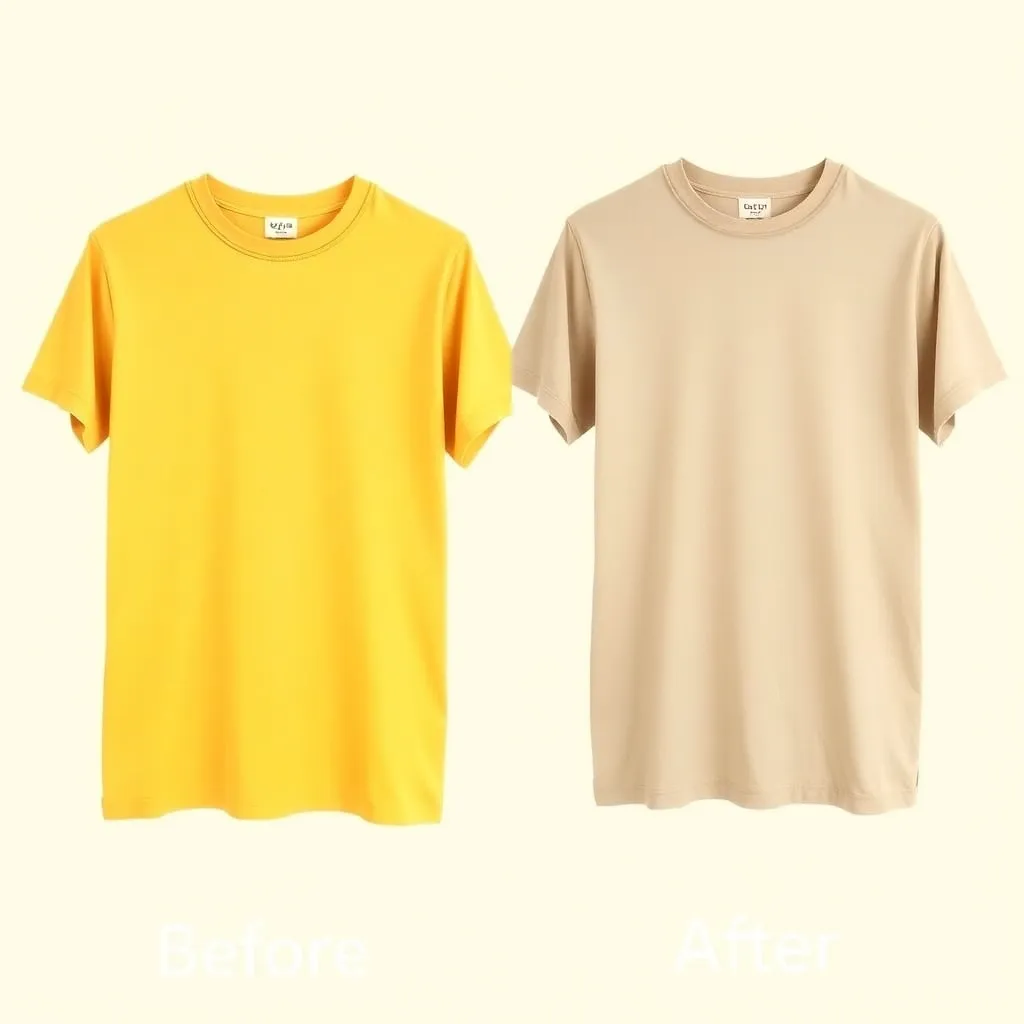Cotton T-Shirt Myth-Busting: Separating Fact from Fiction [Thumbnail: A magnifying glass over a cotton t-shirt]
Cotton t-shirts have been a cornerstone of casual wear for decades, and it’s easy to see why. Soft, breathable, and durable, they’re a comfortable choice for everything from lounging around the house to running errands. But despite their ubiquity, many of us take cotton tees for granted, never stopping to think about what makes them tick.
One of the biggest misconceptions about cotton t-shirts is that they’re inherently comfortable. While it’s true that cotton is a natural, breathable fabric, the comfort of a cotton tee ultimately comes down to factors like thread count, weave, and fit. A low-quality cotton tee can be scratchy and uncomfortable, while a high-quality one can be a joy to wear.
Another area of controversy surrounding cotton tees is their environmental impact. Cotton is a resource-intensive crop to grow, requiring large amounts of water and pesticides. According to the Environmental Protection Agency, the production of cotton accounts for a significant portion of global pesticide use. However, many manufacturers are now turning to organic cotton and sustainable production methods to reduce their environmental footprint.
In this article, we’ll explore the world of cotton t-shirts in depth, examining the myths and misconceptions that surround them. From the benefits of different types of cotton to the impact of production methods on the environment, we’ll give you the lowdown on what makes a great cotton tee – and how to make more sustainable choices when it comes to your wardrobe.
Myth #1: Cotton is Always Natural and Organic
The production of cotton, a natural fiber, can have a significant impact on the environment and human health. Conventional cotton farming practices often involve the use of pesticides, genetically modified seeds, and other chemicals that can contaminate soil, air, and water, as well as pose health risks to farmers and consumers alike.
Fortunately, there are more sustainable options available. Opting for organic cotton t-shirts can help reduce the environmental footprint and promote better working conditions for farmers. However, it’s essential to look for credible certifications that guarantee the organic quality of the cotton used.
Certifications like GOTS (Global Organic Textile Standard) and OCS (Organic Content Standard) are internationally recognized standards that ensure the organic cotton used in the production of textiles meets rigorous environmental and social criteria. GOTS, for instance, prohibits the use of toxic chemicals, promotes sustainable agriculture practices, and ensures fair labor conditions (Global Organic Textile Standard).
By choosing organic cotton t-shirts with these certifications, consumers can make a positive impact on the environment and support more sustainable and responsible textile production practices. It’s a simple yet effective way to promote a healthier and more environmentally friendly fashion industry.

Myth #2: Cotton T-Shirts Are Always Breathable
Cotton is often praised for its natural breathability, but it’s not a guarantee that every cotton fabric will keep you cool. The way the fabric is woven and its thickness play a significant role in determining its breathability. A loose weave, for instance, allows for better airflow and moisture evaporation, making it an ideal choice for warm weather clothing.
Thin fabrics are also more breathable than their thicker counterparts. This is because they allow for more airflow and are less likely to trap heat. Additionally, moisture-wicking treatments can enhance the breathability of cotton fabrics. These treatments help to draw sweat away from the skin and allow it to evaporate quickly, keeping you cool and dry.
When shopping for a breathable cotton tee, look for fabrics with a loose weave and a thin profile. You can also check the label for moisture-wicking treatments or technologies like Cotton Incorporated’s TransDRY technology. By choosing a breathable cotton fabric, you can stay cool and comfortable all day long.
Myth #3: Cotton T-Shirts Shrink Easily
Cotton t-shirts are prone to shrinkage, but it’s not always the fabric’s fault. In many cases, improper washing and drying techniques can cause the shirt to shrink. For instance, washing the shirt in hot water or putting it in the dryer on high heat can cause the fibers to contract, resulting in a smaller fit.
Low-quality manufacturing can also contribute to shrinkage. Some manufacturers may not pre-shrink or sanforize their cotton fabrics, which means they haven’t taken steps to prevent shrinkage during the production process. This can lead to a higher risk of shrinkage when the shirt is washed and dried.
To minimize the risk of shrinkage, it’s essential to follow the care label instructions carefully. Check the label for specific washing and drying instructions, and avoid using hot water or high heat when possible. Additionally, look for shirts made from pre-shrunk or sanforized cotton, which have already undergone a shrinkage treatment during manufacturing.
According to the Cotton Incorporated website, sanforization is a process that shrinks the fabric before it’s cut and sewn into a garment, reducing the risk of further shrinkage. By taking these precautions, you can help ensure your cotton t-shirt fits well and remains comfortable wash after wash. Learn more about sanforization.

Myth #4: Cotton T-Shirts Are Bad for the Environment
The environmental impact of cotton production is well-documented, with issues like water pollution, soil degradation, and pesticide use affecting ecosystems worldwide. However, it’s essential to consider the broader picture, as the lifecycle of a cotton t-shirt extends far beyond the production phase.
From the cultivation of cotton to the manufacturing process, transportation, storage, and ultimately, disposal, each stage contributes to the overall environmental footprint of a cotton t-shirt. According to the United States Environmental Protection Agency (EPA), the textile industry is one of the largest contributors to waste management problems, with the average American generating about 82 pounds of textile waste per year.
To mitigate these effects, consumers can make informed choices by opting for sustainable brands that prioritize environmentally friendly practices throughout their supply chains. Additionally, recycling or repurposing old cotton tees can significantly reduce waste and conserve natural resources. By considering the end-of-life cycle of a cotton t-shirt, individuals can help minimize its environmental impact and promote a more circular economy.
As consumers become increasingly aware of the environmental consequences of their purchasing decisions, there is a growing demand for sustainable fashion practices. By supporting brands that adopt eco-friendly approaches and adopting responsible consumption habits, we can work together to reduce the environmental footprint of the fashion industry and promote a more sustainable future.
Conclusion: The Truth About Cotton T-Shirts
One of the most significant advantages of choosing a high-quality cotton t-shirt is its comfort. Cotton is a natural breathable fabric that allows for airflow and moisture wicking, making it ideal for everyday wear. Additionally, cotton tees are often soft to the touch and gentle on the skin, reducing the risk of irritation or discomfort.
When it comes to sustainability, cotton t-shirts have gotten a bad rap in recent years. However, by choosing organic or recycled cotton options, consumers can significantly reduce their environmental impact. According to the Organic Trade Association, organic cotton farming uses 88% less water and 66% less energy than conventional cotton farming methods.
Style is also an important consideration when choosing a cotton t-shirt. From classic crew necks to trendy graphic tees, there’s a cotton tee out there to suit every taste and preference. By investing in a few high-quality, timeless pieces, consumers can create a versatile wardrobe that will stand the test of time.
Finally, taking care of your cotton tees is crucial to ensuring they last for years to come. This includes washing them in cold water, avoiding harsh detergents, and air drying or tumble drying on a low setting. By following these simple care instructions, consumers can extend the life of their cotton tees and reduce waste.
